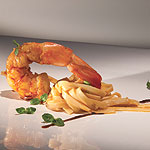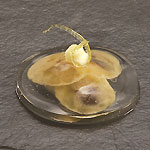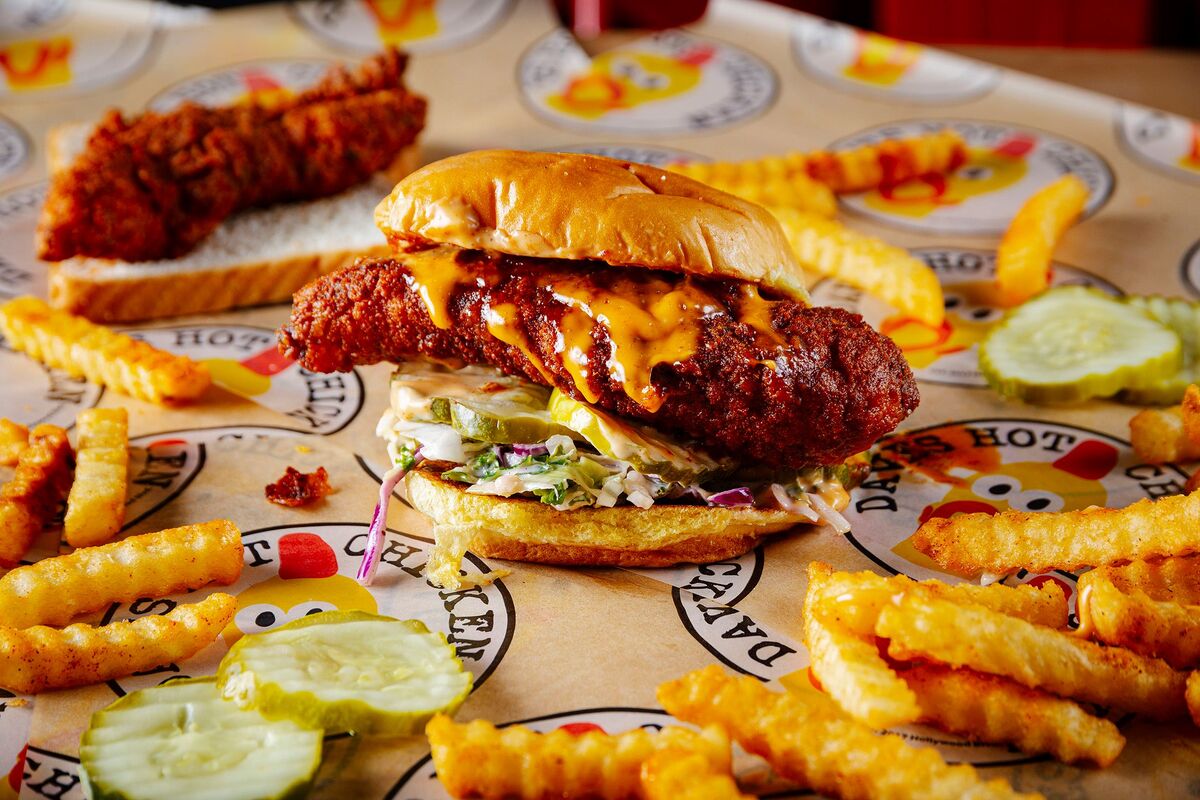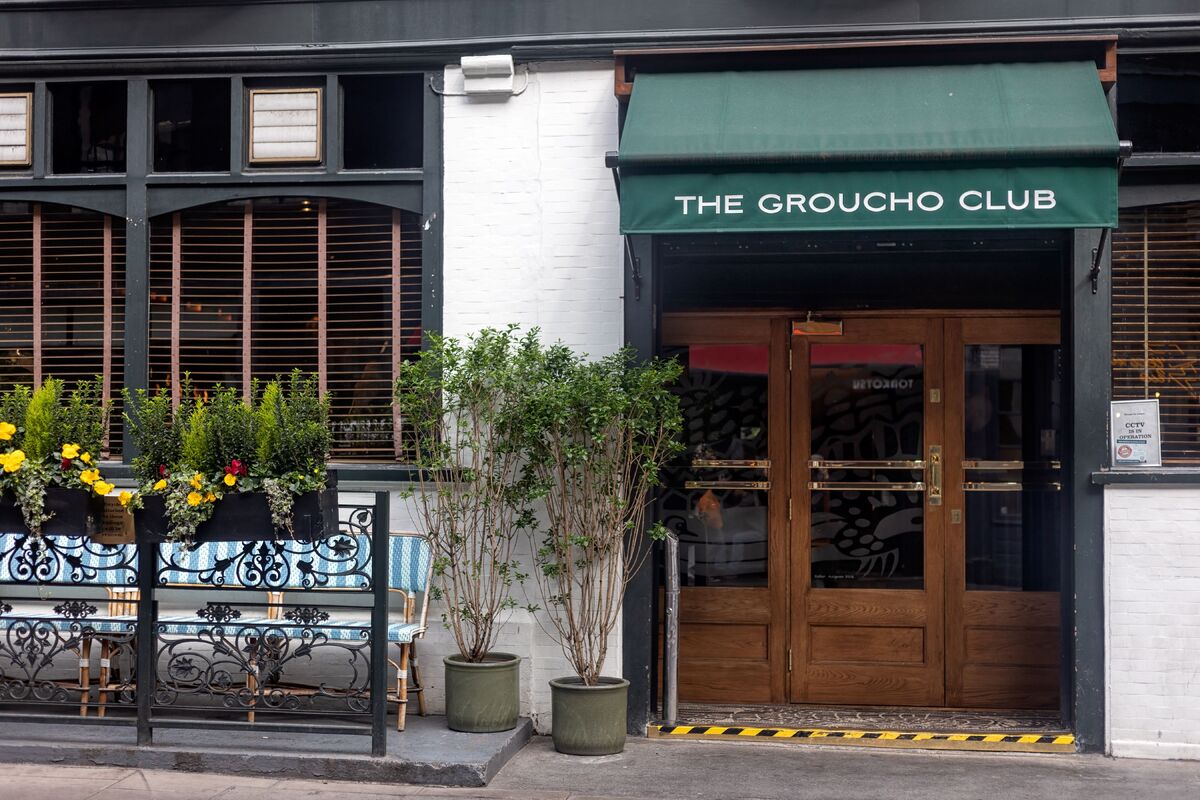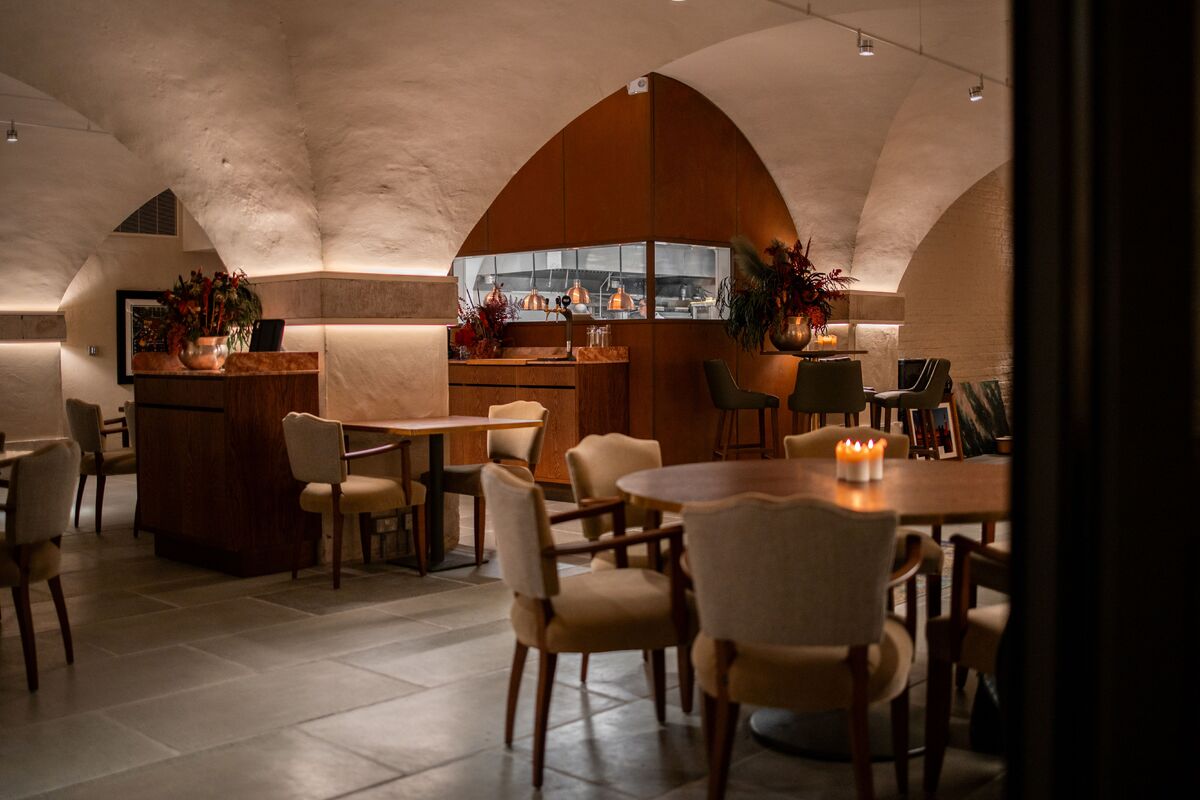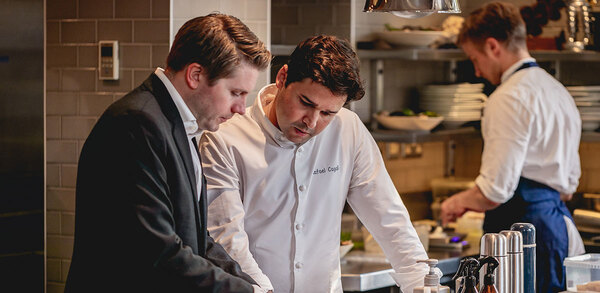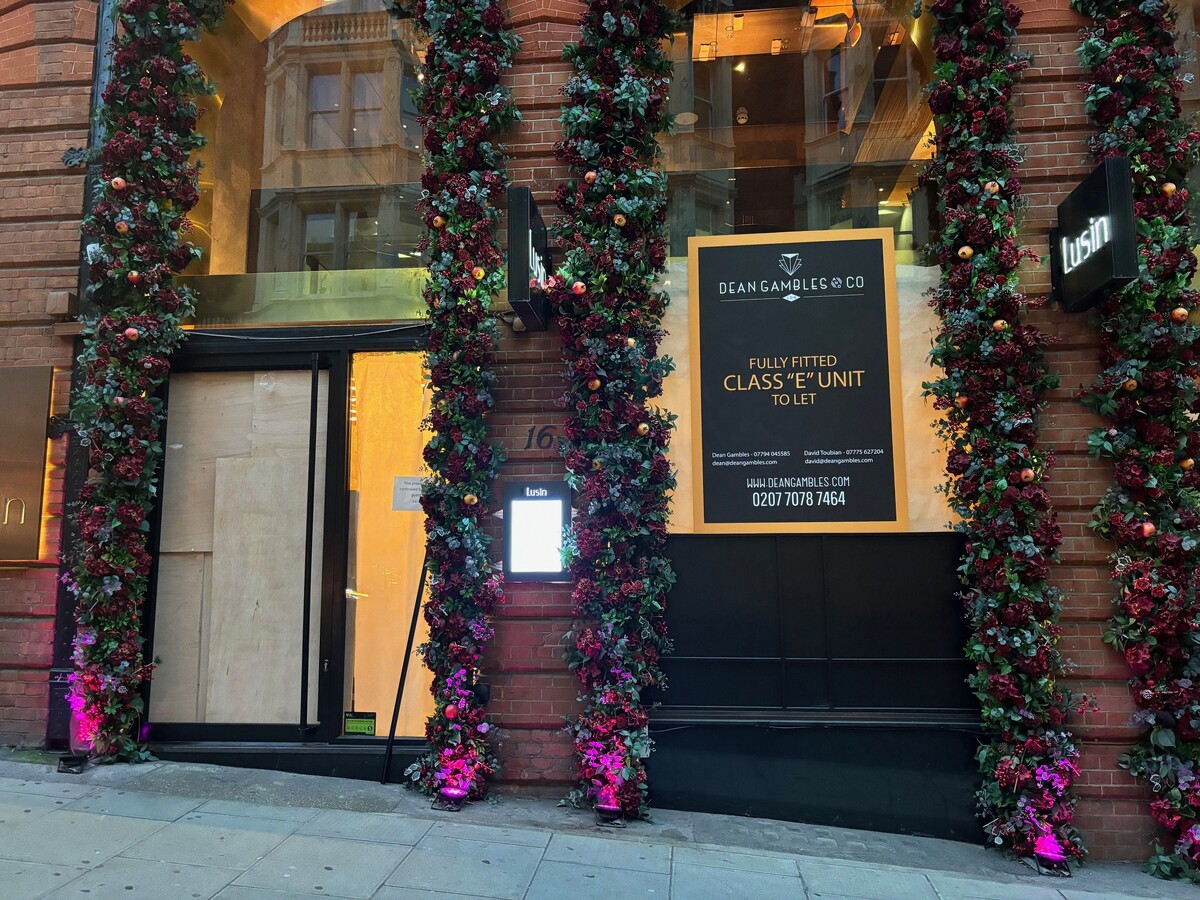Alex Atala – the Amazon explorer
Since he opened his first restaurant 10 years ago in São Paulo, Alex Atala has become a culinary superstar in his native Brazil. As part of his vision for Brazilian cuisine he has been experimenting with newly-discovered foods from the Amazon region. Sybil Kapoor reports.
Imagine being able to create dishes from a seemingly infinite array of exotic Amazonian fruits, roots, vegetables and herbs. Now imagine living in one of the largest cities in the world - São Paulo. Step out on to its noisy, hot streets and your senses are assaulted by the scent of fried food - palm oil and coconut - mixed with the smell of hot, damp concrete. You've spent five years cooking in Europe. Back in your home city, native haute cuisine is more Italian and French than Brazilian, and traditional family dishes, such as rice and beans, are considered too homely to be served in a top restaurant.
This is what confronted the 27-year-old Alex Atala on his return to Brazil in 1994. In case you're wondering who Atala is, he has kickstarted Brazil's gastronomic food revolution. Since opening his first restaurant, D.O.M., in São Paulo 10 years ago, Atala has become a culinary superstar in Brazil. Everyone from Ferran Adrià and Massimiliano Alajmo to Wylie Dufresne and Marcus Samuelsson have beaten a path to D.O.M.'s door. It is currently rated 24th in the S. Pellegrino World's 50 Best Restaurants guide.
By the time the FIFA World Cup reaches Brazil in 2014, it's likely that Atala's name will be as familiar to you as Thomas Keller or Heston Blumenthal. Atala has plans for Brazil. It is almost impossible for a British chef to grasp the immensity of the project Atala has taken on, dealing with the sheer size of the country, the incredible diversity of natural produce and the complete lack of belief in Brazilian cuisine.
"Being creative in Brazil can be very difficult" says Atala. "You have to try to be both traditional and creative at the same time if you want to convey your message."
Atala trained in Belgium and worked in France and Italy before returning to São Paulo.
"While I was away I realised that I was not going to be able to cook French food as well as France's indigenous chefs and that made me look at my own culinary heritage," he explains.
"Many of the ingredients you can buy in the market at, say, Belem do Para [a city on the Amazon delta] are unfamiliar to the majority of Brazilians. I remembered how I had reacted when I first tasted truffles and foie gras in Belgium - I didn't like them. The first contact with any new food is like a shock. The second time I tasted them, I tolerated them and by the third time, I began to appreciate them."
A SUBTLE EDUCATION
Atala realised that his first step was to subtly educate his Brazilian customers into appreciating their indigenous produce. He does this by taking native Brazilian ingredients, which are not used widely in restaurant cooking, and heightening their taste by using classical culinary techniques.
A good example of this is Atala's palm heart fettuccine (see recipe on page 21). Italian food forms an integral part of Brazilian haute cuisine, so he took the familiar idea of dressing pasta in a creamy prawn sauce but replaced the fettuccine with lightly cooked, finely sliced, fresh palm hearts. Their delicate, nutty flavour adds a delectable, original note.
At the heart of his cooking is the Brazilian staple manioc, also known as cassava or yuca. This is an indigenous Amazonian tuber and you can find around 200 different varieties in Brazil, where it is also used to make farinha - fine manioc flour, tucupi - naturally fermented and boiled juice of manioc, and tapioca. Thus, Atala might serve deep fried oysters (coated in brioche crumbs) with salmon roe, and tapioca pearls that have been marinated in raw oyster juice, lime juice and Tabasco. These then burst with the flavour of raw oyster when eaten.
Another example is his fillet of the white-fleshed pirarucu fish (a huge Amazonian fish that weighs up to 300kg and has the texture of sea bass) which he coats in manioc flour, pan fries and serves with a tucupi sauce and wild Amazonian herbs. The dish is finished with tapioca pearls and dark açai berries (another Amazonian fruit).
Initially, he simply used ingredients that he could buy from the vast market in Belem do Para. A duck confit might be served with a Madeira and Amazonian fruit sauce and accompanied by a cream of cara root and murece - a strange Amazonian fruit that smells and tastes of mature cheese. Cara is a subtly-flavoured white tuber, so they taste wonderful puréed together with cream.
DISCOVERING NEW FOODS
However, as Atala quickly points out, there is so much more to discover in Brazil. The Amazon covers 2,000sq km of rainforest and within it are nine different indigenous tribes, which eat very different foods within their own areas.
Atala has hooked up with the anthropologists and scientists at the Social Environmental Institute, who are trying to discover and classify new products, including foods from the Amazonian region. They test anything that sounds interesting, to ensure it is safe to eat, then they hand it over to Atala to experiment with.
One of Atala's favourite new discoveries is a fragrant Amazonian root called priprioca. The Amazonian Indians use it as a scent rather than a food. Atala decided to use it like an essence, so with the help of a perfumer, he developed an extract that he could use in both savoury and sweet dishes, such as the Brazilian favourite of crème caramel. He laughs as he says: "Its aroma is intensely herbal: similar to marijuana, but without the effects!"
Part of Atala's vision for Brazilian food is to encourage the development of sustainable, environmentally sound methods of farming newly discovered produce, while at the same time protecting the rain forest and the vulnerability of its indigenous tribes.
On falling in love with wild Amazonian herbs, such as a form of wild basil and a type of wild coriander, he persuaded a herb grower he knew in São Paulo to try and cultivate them. Many of Atala's recipes are characterised by his use of wild coriander, along with tucupi and pimenta de cheiro, a very aromatic, sweet green pepper. The herbs grew well, and such is their popularity that the farmer now sells them widely, while another farmer has started growing them for the Rio de Janeiro market.
Perhaps an even more significant development has been the discovery of a new variety of wild palm perfectly adapted for farming. Normally, palms take six years to grow. The tree is then killed to harvest a single 700g heart - hence the high price. Until relatively recently, when palm farming was developed, many palm hearts were collected from the jungle.
The new variety they have discovered only takes two years to grow and as it has several different shoots, it can be harvested at different times so that the tree doesn't die. Each heart weighs about 2kg and unlike other varieties, the leaves don't oxidise, so they can be served raw as well as cooked.
PALM HEART REVOLUTION
Again, Atala used his contacts within the farming world to encourage the planting of this variety, so that now this new form of palm heart has taken Brazilian restaurants by storm. Palm heart fettuccine is now sold in supermarkets. Many chefs are taking up his style of palm heart dishes such as his delicate raw carpaccio of palm heart with scallops and Brazilian sea lettuce. He dresses it with a citronella essence vinaigrette - another Atala innovation, since until then citronella, which is grown all over Brazil, was used in cosmetics and mosquito repellants rather than cooking.
In the 21st century it is easy to think that the world has few new ingredients to offer a chef. However, one conversation with Atala soon demolishes such thoughts. Every dish he describes is made from not just one, but many unfamiliar ingredients. Consider, for example, how Ferran Adrià and Juan Mari Arzak must have felt on being presented with Brazilian turus - one-metre-long worm-like bivalves, similar to razor clams, that live in rotten logs in the brackish water at river mouths. Atala sears them lightly in olive oil and seasons them with lime juice.
His culinary world is filled with exciting new possibilities, such as what he could do with the dark broth that Amazonian Indians make from boiling a particular type of ant. Apparently, once strained of ants, it tastes of mint, ginger and lemon grass.
Atala says his food is simply an expression of being Brazilian. Music, colours and smells may inspire, but in essence, it is merely a result of being Brazilian. Whatever the cause, there is no doubt that Atala has acted like a catalyst on others. Brazilians now have a growing sense of national pride about their food and the restaurant scene is changing rapidly.
In January 2009 Atala opened Dalva e Dito, a brasserie in São Paulo. It specialises in everyday Brazilian food such as roast chicken with rice and beans, but with Rolls-Royce treatment. Naturally, there are Atala touches, such as a chocolate and priprioca essence mousse.
He is working hard to try and promote Brazilian produce and develop sustainable farming strategies that will ultimately lead to export. Atala clearly hopes that in time, we too will be cooking with some of his wonderful tropical ingredients.
Given that Brazil will soon be the media's darling with the impending 2014 FIFA World Cup, followed by the 2016 Olympics, his dream may well come true. Everyone is going to be looking for the essence of Brazil and, when it comes to food, they need look no further than Alex Atala.
**PALM HEART FETTUCINE WITH CORAL BUTTER AND GLAZED PRAWNS
**
INGREDIENTS (Serves four)
For the coral butter
- 3 garlic cloves, minced
- 30ml olive oil
- 500g prawn heads
- 300ml water
- 400g creamy butter
For the fettuccine
- 1.3kg palm hearts, cut into fettuccine
- 12 large prawns with the tail, cleaned
- Salt and freshly ground black pepper
METHOD
Fry the minced garlic with the olive oil in a big frying pan and add the prawn heads. Stir the heads until they release their coral (which adds colouring and flavour to the butter). Continue this process for 5 minutes.
Transfer the heads to a deeper pan and deglaze the frying pan well with some of the water. Add this to the deeper pan, then add the rest of the water to the deeper pan and cook for approximately 20 minutes. Strain and cool the liquid. Once cold, beat into the creamy butter. Mix until smooth.
Peel the bark around the palm heart and slice with a Japanese mandolin to make long strips like fettuccine. The thickness must be around 1mm.
Drop the fettuccine into a pan of boiling salted water. Cook for about a minute until it is tender.
Melt the coral butter in a frying pan. Add the blanched fettuccine and season. Stir the hot pan in circular movements until the sauce thickens quickly and reaches a nape texture.
Season the prawns with salt and pepper and sear them in a very hot frying pan until they are bronzed. The centre must remain uncooked. Glaze the prawns and serve.
LEMON BANANA RAVIOLI WITH PRIPRIOCA CARAMEL
**
INGREDIENTS**
(Serves 10)
For caramel priprioca
- 320g sugar
- 20ml essence of priprioca
- 80ml water
For crème patissiere
- 40g pasteurised egg yolk
- 40g caster sugar
- 8g wheat flour
- 200ml milk
For sugar syrup for the confit of lemon zest
- 500ml water
- 500g sugar
- 1 lemon
For lemon and banana ravioli
- 175g sugar
- 175ml water
- 100ml of lemon juice
- 2g of agar-agar
- 20g of gelatin
- Banana, finely sliced into rounds
METHOD
Make a caramel with 320g sugar to about 142°C and add 20ml essence of priprioca and 80ml water.
Make the patissiere by mixing the pasteurised egg yolks with 40g sugar and 8g flour in a bowl. Bring the milk up to the boil. Then slowly mix the milk into the yolks. Strain the mixture into a saucepan and cook over low heat, stirring constantly for about 5 minutes.
Remove from heat, transfer to a bowl and sit in a bowl of iced water. Cover the surface of the crème patissiere with cling film to prevent it forming a skin.
Make a sugar syrup by boiling together 500ml water with 500g sugar until the sugar dissolves. Pare the peel from the lemon, leaving some of the pith attached to the zest. Cut into julienne and blanch in boiling water. Cool quickly in iced water and repeat the process three times. Then heat the sugar syrup and add the blanched lemon zest.
To make the banana ravioli, mix together 175g sugar, 175ml water, 100ml lemon juice and 2g agar-agar in a saucepan. Bring to the boil then remove from the heat and sprinkle the gelatin over the liquid. Once it has dissolved, pour the liquid into a wide mould so that it sets into a 2mm thick sheet. Chill until set.
Stamp out 5cm diameter rounds and assemble the ravioli on a baking sheet as follows:
Place a round of lemon jelly on the plate, top with a drop of crème patissiere followed by 3 slices of banana, then cover with another round of lemon jelly.
To serve
Take a slate 25cm x 10cm and arrange the ravioli on the left side. Garnish with the candied lemon zest and finish with a whisk of caramel priprioca to one side of the ravioli.



